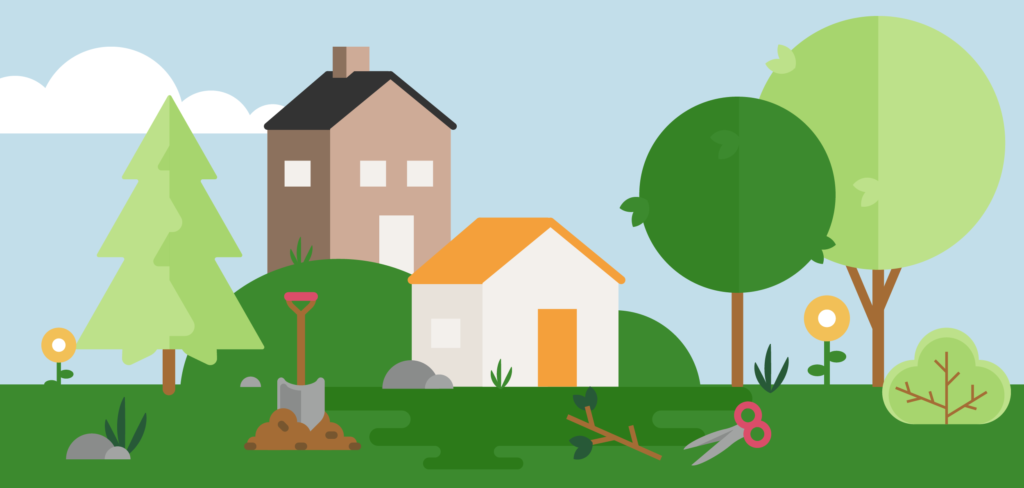-New protections safeguard 157,000 more trees and address inequities in canopy coverage by planting new trees in historically underserved neighborhoods
Beginning July 30, Seattle’s new tree protection ordinance will take effect for all trees on private property. The new tree code (Ordinance 126821) strikes a balance by protecting and growing a healthy tree canopy citywide and addressing inequities in tree canopy distribution that impact historically underserved communities while supporting housing production needed during a homelessness and housing crisis.
As shown in the Office of Sustainability and Environment’s 2021 Tree Canopy Assessment, most tree loss is occurring outside of development and in areas zoned Neighborhood Residential (formerly Single Family) and Parks and Natural Areas. Losses in these two areas account for 78% of the total canopy loss between 2016 and 2021. The assessment also showed the canopy loss is not happening equitably, with neighborhoods most impacted by racial and economic injustices starting with less canopy coverage and losing more canopy than the citywide average.
Under the new ordinance, the City will add tree protections for over 157,000 more trees by limiting removal of trees on properties not undergoing redevelopment and requiring replacement for any tree removed that is 12” or greater in diameter. Removal of hazardous trees will also require tree replacement, and there are new incentives for property owners and builders to retain trees.
Trees formerly known as “exceptional” (now called Tier 2 trees) will have a lower threshold for designation and are protected from removal when they are at least 24” in diameter, rather than 30”. All heritage trees designated by the City’s heritage tree program (now called Tier 1 trees) must be retained unless hazardous, and new development in Neighborhood Residential zones require trees be planted along the sidewalk in the right of way.
When a tree must be removed, a property owner can choose to either replant onsite or pay the equivalent value into the One Seattle Tree Fund. This added flexibility allows for trees to be planted more equitably and spread throughout neighborhoods or public spaces with historically less tree canopy.
The new ordinance also increases penalties for any illegal tree removal and creates additional penalties for unregistered tree service providers performing commercial tree work, such as a loss of business license or significant fines.
Additionally, Mayor Harrell’s One Seattle Tree Plan now requires three trees be planted for every tree removed on City-owned land and targets new plantings in underserved communities that are most impacted by climate change to establish the next generation of Seattle’s urban forest. New and replacement trees are required to have a robust maintenance plan to maximize survival in the first five years after planting when they are at their most vulnerable.
Other tools for achieving tree canopy goals include:
- Trees for Neighborhoods Program – Application period is open now to obtain up to three free trees per household to plant on private property or along the sidewalk. Almost 14,000 trees have been planted through the program to date.
- Green Seattle Partnership – Collaboration between City of Seattle, community groups and non-profits, businesses, schools, and thousands of volunteers working together to restore and actively maintain the City’s forested parklands.
- Tree and Landscape Program – The Seattle Department of Transportation’s program that provides critical maintenance for 40,000 street use tree assets and emergency response to over 350,000 right-of-way trees. Many specific projects also include tree plantings.
- Washington Tree Equity Collaborative – Statewide partnership with American Forests and the Department of Natural Resources to build more inclusive urban forestry programs and expand tools, trainings, and technical assistance for projects geared towards tree equity. Seattle was among the first Washington cities to join the Tree Equity Collaborative in April.
- Greening Industrial Properties: Funding for outreach, engagement, and implementation of greening efforts on private properties in industrial and industrial-adjacent neighborhoods. Project types include tree planting, swales, and green walls. Previous work has focused on communities in the Duwamish Valley.
- Tree Canopy Equity and Resilience Plan – The Office of Sustainability and Environment is developing a tree canopy equity and resilience assessment and plan that will identify the best strategies and locations for planting, growing, and maintaining trees on private and public land and in the right-of-way, with a focus on low-canopy neighborhoods in environmental justice priority areas. This plan would pave the way for leveraging future federal, state, and philanthropic funds that support the resilience of the tree canopy.
- New Urban Forester – An Urban Forester position was funded in the 2023-2024 budget to work across City departments to help meet Seattle’s 30% canopy cover and forest health goals.
New limits on tree removal outside of development, targeted tree planting for equitable distribution of canopy, leveraging and expanding existing City tree planting programs, and 3-to-1 replacement of trees on City land remain important tools in bringing Seattle closer to our tree canopy goals of 30% by 2037.
To learn more about the new tree protection rules, please read our New Tree Regulations Coming Soon! blog article.

